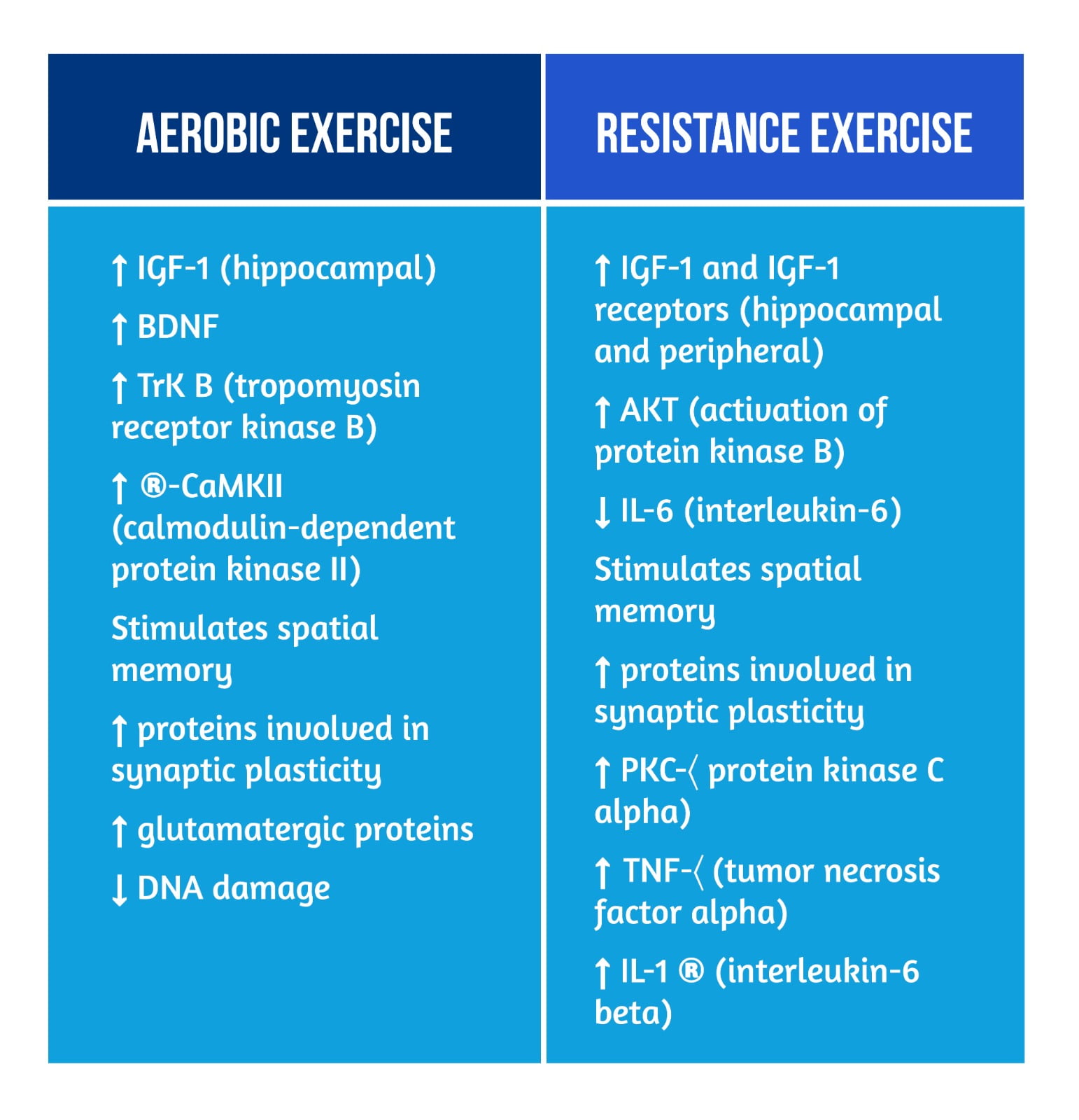Does a healthy lifestyle impact neuroplasticity?

Authors: Mihaela Molnar, Livia Popa
Keywords: neuroplasticity, diet, physical exercise, sleep
Does a healthy lifestyle impact neuroplasticity?
The brain’s ability to change its structure and function in response to experience is referred to as “neuroplasticity” and is closely linked to gains in learning, memory, and cognitive performance [1].
Modifiable lifestyle variables, such as physical exercise, cognitive stimulation, and food, are important methods for preserving brain health in the aging process. Several studies have shown links between a person’s lifestyle choices, their brain’s structure, and function, and their cognitive performance as they age [2].
Cognitive engagement improves brain and cognitive reserve while physical exercise and nutrition modify common neuroplasticity substrates in the brain:
- neurotrophic signaling;
- neurogenesis;
- inflammation;
- stress response;
- antioxidant defense [2].
Physical activity lowers dementia risk and age-related brain shrinkage, regardless of nutrition. Exercise has a documented history of slowing disease development and reducing impairment in dementia and other neurodegenerative disorders [3].
Neurophysiological changes that underlie neuroplasticity occur from quick, transient adaptations in synapse strength to longer-lasting structural alterations [1]. The process is facilitated by molecular mechanisms which are listed in the following table (Table 1).

Is there a difference between the type of physical exercise and cerebral changes?
Aerobic exercise is defined as a physical activity that has a repetitive character (swimming, biking, running), and it can:
- increase oxygen circulation through the cardiovascular system;
- induce the expression of biomarkers for neuroplasticity, such as:
- brain-derived neurotrophic factor (BDNF),
- insulin-like growth factor 1 (IGF-1),
- vascular endothelial growth factor (VEGF);
- enhance biological processes of synaptogenesis, neurogenesis, angiogenesis, and gliogenesis;
- increase grey and white matter volumes;
- stimulate neuronal activity [1].
Through these mechanisms, aerobic activity can improve cognitive and motor function. Several studies have shown that 30 minutes of moderate-intensity exercise improved memory, reasoning, concentration, and planning [1, 4].
In resistance exercise muscles are repeatedly contracted. It can improve motor-evoked potentials (MEPs) and decrease short-interval intracortical inhibition (SICI) and contralateral silent period (CSP) while the muscle is engaged. This implies that there may be a general increase in corticospinal output to the trained muscle during short-term resistance training [1].
The global effect of training-induced neuroplasticity is defined as an increased corticospinal output to both the trained and untrained limbs [1].
Following 12 months of twice-weekly resistance training in healthy elderly women, functional magnetic resonance imaging (fMRI) results revealed increased hemodynamic activity in:
- anterior left middle temporal gyrus,
- left anterior insula,
- lateral orbital frontal cortex [1].
Additionally, these hemodynamic adjustments were linked to enhancements in cognition, as determined by the Flanker test [1].
The Eriksen Flanker test is a series of response inhibition tests used in cognitive psychology to assess one’s capacity for controlling improper responses in a given situation.
Resistance training influences functional connectivity and memory in senior individuals with mild cognitive impairment. During encoding and recall processes, resistance training enhances activity in:
- the right lingual gyrus,
- occipital fusiform gyrus,
- right frontal pole [1].
Through different processes from those brought on by aerobic training, resistance exercise promotes neurophysiological modifications (see Table 2).

Evidence suggests that increased cerebral blood flow and elevated IGF-1 levels are key factors in exercise-induced neuroplasticity following both aerobic and strength training [1].
How does diet impact brain structure and function?
Diet can affect brain chemistry and function, which may influence neuroplastic changes [1].
MEPs and long-interval intracortical inhibition (LICI) are increased by an acute intake of glucose, but there are no modifications in SICI, intracortical facilitation (ICF), or resting motor threshold (RMT) [1].
Diets high in vegetables, fruits, nuts, grains, fish, and unsaturated fats, but low in meat and dairy, such as ketogenic or Mediterranean diets, can support brain function by preserving the integrity and structural connectivity of essential neuronal circuits and enhancing SICI levels without modifying RMT, CSP, ICF [1].
Caloric restriction increases BDNF levels, stimulates memory and learning, and enhances sensorimotor function [1,2]. Additionally, it has been demonstrated that caloric restriction has good effects on clinical populations, such as a decreased risk of Alzheimer’s disease and a milder occurrence of neurochemical imbalances and motor dysfunction in a monkey model of Parkinson’s disease [1].
Physical exercise combined with a high omega-3 fatty acid diet or caloric restriction provides synergistic benefits, such as increased BDNF levels (see image 1) [1].
What are the implications of sleep in neuronal plasticity?
Sleep has a main role in neuroplasticity, recovery from brain injury, normal cognitive functioning, learning, and memory. Appropriate cerebral blood flow facilitates brain plasticity and suffers dynamic modifications during the sleep-wake cycle. It has been demonstrated that 24 hours of sleep deprivation decreased attention, reaction time, and cerebral blood flow [1].
Sleep and higher levels of physical activity have been linked to increased brain plasticity, compared to sedentary habits. In major depression, which is characterized by disrupted neural processes related to plasticity-inducing neurotransmitter imbalances, hypothalamic-pituitary-adrenal (HPA) axis disturbances, oxidative stress, mitochondrial disturbances, and inflammation, exercise, sleep, and diet are all significant contributors to the neural pathways involved. The best way to heal from brain damage and maximize neuroplasticity also depends on sleep and exercise (Figure 1) [1, 5].
Following a ketogenic dietary intervention in obese individuals, various health parameters, including sleep quality and daytime drowsiness, improved, leading to an increase in quality of life [1, 3].

What are the conclusions?
Lifestyle changes (e.g., increased physical exercise levels and a nutritious diet ) are needed to maintain cognitive function and brain health during the aging process and maximize neural plasticity. After plasticity has been triggered, cognitive training and rehabilitation can help cognitive circuits reorganize and operate properly (to increase brain reserve) and practice processing techniques and abilities that apply to daily life (cognitive reserve) [1, 2].
Physical activity promotes neuroplasticity by promoting neuronal development and differentiation, increasing cell signaling, and improving cognitive abilities such as learning and memory [3].
Since learning and recovery from neurological dysfunction and brain damage are both based on neuroplasticity, the study of neuroplasticity is crucial to the field of neurorehabilitation [1].
For more information on neurorehabilitation, visit:
- What is the impact of early life on brain and cognitive reserve?
- Does exercise induce neuroplasticity?
- Efficacy of placebo in managing pain for neurological disorders
We kindly invite you to browse our Interview category: https://efnr.org/category/interviews/. You will find informative discussions with renowned specialists in the field of neurorehabilitation.
References
- Pickersgill JW, Turco CV, Ramdeo K, Rehsi RS, et al. The combined influences of exercise, diet and sleep on neuroplasticity. Frontiers in Psychology. 2022. doi: 10.3389/fpsyg.2022.831819
- Phillips C. Lifestyle modulators of neuroplasticity: How physical activity, mental engagement, and diet promote cognitive health during aging. Neural Plasticity. 2017. doi: 10.1155/2017/3589271
- Park HS, Park SS, Kim CJ, Shin MS, Kim TW. Exercise alleviates cognitive functions by enhancing hippocampal insulin signaling and neuroplasticity in high-fat diet-induced obesity. Nutrients 2019, 11, 1603. doi: 10.3390/nu11071603
- Fernandes MSS, Ordônio TF, Santos GCJ, Santos LER, et al. Effects of physical exercise on neuroplasticity and brain function: a systematic review in human and animal studies. Neural Plasticity, 2020. doi: 10.1155/2020/8856621
- Svensson M, Lexell J, Deierborg T. Effects of physical exercise on neuroinflammation, neuroplasticity, neurodegeneration, and behavior: What we can learn from animal models in clinical settings. Neurorehabilitation and Neural Repair. 2015;29(6):577-589. doi: 10.1177/1545968314562108









